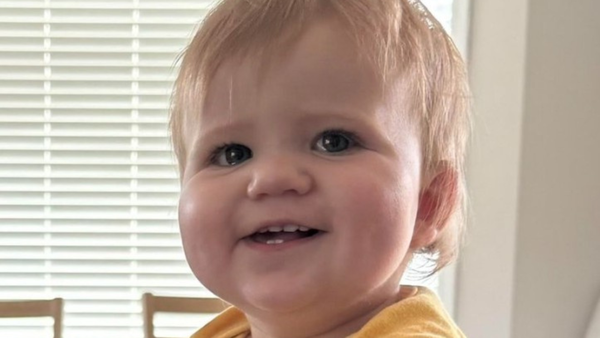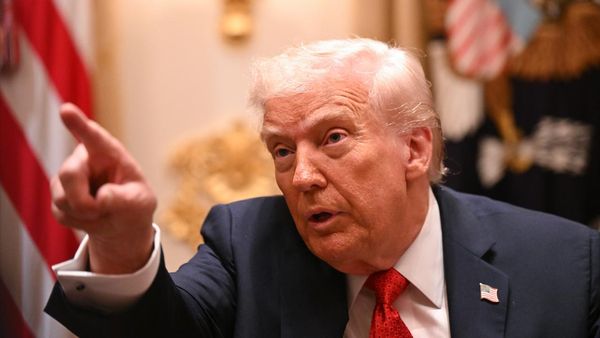
A decade ago everything in Australian politics was held to just one standard: would it fly in Penrith and surrounding western Sydney electorates?
If you could make it there you could make it anywhere, political fixers believed — especially Labor’s game theorists. It was so pervasive that some people protested they didn’t live in Penrith but they mattered too.
Penrith had one more big kick left though: voters picked up a slingshot and catapulted the seat over the fence into the Liberal camp at a 2011 state byelection that saw a record-setting 25.7% swing against Labor, turning the seat from a +9% ALP power base into a solid 16% Liberal seat. It was so alarming it shocked federal Labor MPs and fed the push to oust first-term prime minister Kevin Rudd.
But that healthy margin eroded in subsequent elections, and a redistribution after the 2019 NSW poll cut the party’s advantage in half.
Stuart Ayres, one-time deputy Liberal leader, holds the seat — the second-most marginal electorate for his party in the state.
Putting Ayres’ association with the John Barilaro saga to one side, the history of successive Liberal governments over the past decade — that 2011 byelection foreshadowed the end of 16 years of Labor rule — suggests the importance of western Sydney is not exhausted yet.
Election chances
If you’re watching the NSW election results roll in on March 25 and the Liberals look even coming close to holding Penrith, Premier Dominic Perrottet might be able to cling to power. However, this is the least likely outcome.
Perrottet ascended to the premiership in October 2021 after the ostensibly popular Gladys Berejiklian became embroiled in a corruption inquiry focused on her secret boyfriend and former country MP Daryl Maguire. Perrottet must have occasionally questioned the worth of winning this prize he had craved, considering the Barilaro bad-juju avalanche that has since swept down on him, and the revelation that in his youth he attended his 21st birthday dress-up party in a Nazi SS uniform.
The fact he’s still got an electoral pulse is down to his ability to shape-shift from a hard-right Liberal to something more moderate. Plus his Labor opponent, Chris Minns, has adopted a small-target strategy that makes Prime Minister Anthony Albanese’s federal election effort last year look like one-time British PM Boris Johnson in full flight on the campaign trail.
Minns is a political lifer. Before being elected to Parliament eight years ago, he had worked as a Labor councillor and deputy mayor in south Sydney, with stints as a party official and senior ministerial adviser. Now he finds himself as the alternative premier contesting the most marginal seat in the state: Kogarah, on a squeaky 0.3%.
The consensus among the political class in Sydney and beyond is that despite Minns’ cloak of invisibility, he’ll probably get to the top job in one of three ways.
The first is that Labor will manage a small majority, probably off the back of a collapse in the Liberal vote in Sydney suburbs — particularly in those work-with-your-hands western districts.
The Liberals managed to build support through the 2015 and 2019 polls in territory once more associated with Labor. However, just as Labor under Dan Andrews in Victoria suffered swings in seats where the pandemic lockdowns had the greatest impact (among voters who couldn’t work from home), the NSW Liberals might experience a similar backlash.
This alone could see an on-paper majority — a narrow advantage has been reduced to a reliance on sidelined former Liberals — switch to a slender Labor one. This is more difficult than people might presume. The ALP needs nine extra seats to govern in its own right, and on a uniform basis that would require a swing of more than 6%. It’s a big hurdle.
The second possible outcome is for Labor to just fall short and govern with the backing of just one or two Greens and independents.
The third option is seen as more likely: a government comprising a collection of Greens, old-style country independents from the Shooters, Fishers and Farmers, and some teal-styled independents standing in seats similar to those won off the federal Liberals last May.
Morrison headache
Some light might be focused on broader political questions that could provide food for thought elsewhere in Australia, especially for Peter Dutton’s Coalition and Albanese’s Labor. The most interesting is whether the Liberals are still suffering from long Morrison (the political equivalent of long COVID, an affliction ascribed to the British Tories by The Economist as “long Johnson”).
If there is any hint of good news for the Coalition, such as the swing being kept below 4% and Labor needing to scramble to form a minority administration, it will probably see some light at the end of the Scott Morrison tunnel.
The damage the former prime minister has done to the Liberal brand cannot be overstated, despite efforts by his media boosters to keep his tyres pumped. Long-running sagas surrounding robodebt have kept his appalling record in the public eye.
Dutton will be keen to find any ray of light that voters are putting Morrison behind them (even if it’s only because of exhaustion), such as a positive result in the Aston byelection a week later which his candidate Roshena Campbell is tipped to win.
The fortunes of the teal candidates — standing in the affluent electorates of Lane Cove, Manly, North Shore, Pittwater and Wollondilly — will be examined to see if this movement has any remaining electoral energy.
A few local difficulties for teals in November’s Victorian state poll meant they were seen as failures. The results on the ground were better than they appeared at the time, but some poll watchers wondered whether these candidates were better suited to running against incumbent Liberal governments than Labor administrations. NSW might offer some evidence for that theory.
The outlook is that we will see a change of government in NSW, giving Labor power in every mainland state (something that can be a curse for the ALP in Canberra). It offers little relief for an opposition under Dutton, struggling to find a game plan let alone a way through the government’s still formidable offence and defence strategies.
Has Chris Minns’ Labor team got a chance? Can Dominic Perrottet avoid any more scandals? Let us know by writing to letters@crikey.com.au. Please include your full name to be considered for publication. We reserve the right to edit for length and clarity.







